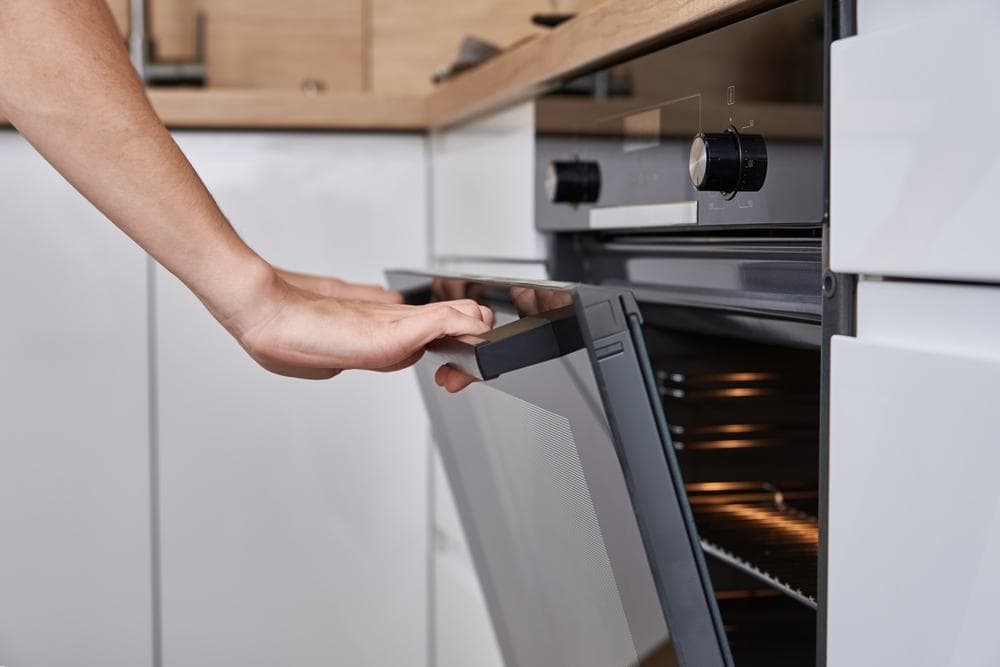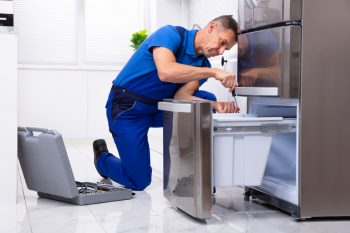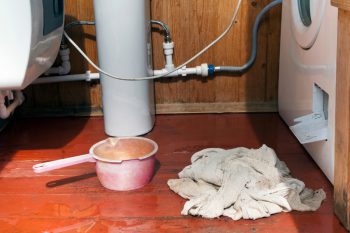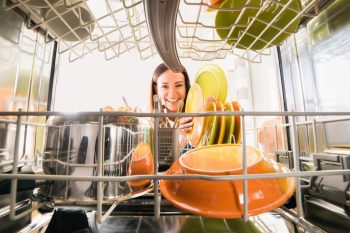
Gas ovens are a popular choice among homeowners for their efficient cooking capabilities and overall reliability. However, knowing how to properly turn off your gas oven is crucial for safety and maintenance purposes. This article provides a comprehensive guide on how to correctly turn off a gas oven, along with some safety measures to consider.
To turn off a gas oven, ensure all the buttons are in the off position and use the dial on the front of your oven to turn it off by turning the dial to the “Off” position. If you have an updated, electronic gas oven, press the “Off” button on the electronic keypad. If you still smell gas, you might need to shut off the gas line by locating the gas shutoff valve behind the stove and turning it to the “Off” position. Always ensure that your kitchen is well-ventilated and prioritize safety when dealing with gas appliances.
Initial Steps
Before attempting to turn off a gas oven, follow these steps:
- Ventilate the area: Open windows to provide ventilation to the room if you smell gas.
- Check the burners: Ensure all the buttons are in the off position.
- Turn off the oven: Use the dial on the front of your oven to turn it off by turning the dial to the “Off” position. If you have an updated, electronic gas oven, press the “Off” button on the electronic keypad.
Turning Off the Gas Supply
If you still smell gas after taking these steps, you might need to shut off the gas line:
- Pull the stove back from the wall to access the gas shutoff valve.
- Locate the gas shutoff valve, usually found behind the stove.
- Turn the gas shutoff valve to the “Off” position.
Safety Measures
When turning off a gas oven, it’s important to follow certain safety measures:
- Turn off the gas completely: Make sure to turn the knob all the way off, past the click, until it won’t turn anymore.
- Keep the stove clean: Regularly clean your gas oven to prevent the buildup of grease and debris.
- Maintain proper ventilation: Ensure that your kitchen is well-ventilated, and use a range hood that vents outside to help get rid of any dangerous gases.
- Install a fire extinguisher: Having a fire extinguisher in or close to the kitchen can be a lifesaver.
- Install carbon monoxide detectors: For any home with live gas lines, install at least three carbon monoxide detectors, set low to the ground, as natural gas falls and fills a room upward.
Confirming the Gas Supply is Off
To confirm if the gas supply has been securely turned off:
- Locate the gas shutoff valve.
- Check the position of the valve: If the lever or handle is perpendicular to the supply pipe, the gas supply is switched off.
- Listen for gas flow: After turning off the valve, you can listen for gas flow through the pipes.
- Check gas-fueled appliances: You can also verify if the gas supply is off by checking if gas-fueled appliances, such as stoves or ovens, are not functioning.
What to do if you smell gas after turning off the oven?
If you smell gas after turning off the oven, you should:
- Turn off the oven immediately.
- Turn off the gas at its source.
- Open doors and windows to let the gas flow out and ventilate the area.
- Extinguish any open flames.
- Go outside to a safe location.
- Call your gas supplier’s emergency line or 911 to report the gas smell.
In conclusion, turning off a gas oven involves not just the flick of a switch but also careful consideration of safety measures. Always prioritize safety when dealing with gas appliances. If you are unsure or uncomfortable with the process, it’s best to consult a professional.
Frequently Asked Questions
What is a gas shutoff valve and where is it located?
A gas shutoff valve is a safety feature that stops the flow of gas to the appliance. It’s usually located behind the stove. You may need to pull the stove back from the wall to access it.
What is the importance of a range hood that vents outside?
A range hood that vents outside helps get rid of any dangerous gases that may be produced during cooking. It ensures that these gases do not accumulate inside your kitchen, thus reducing the risk of gas poisoning or a fire outbreak.
How often should I clean my gas oven?
It’s recommended to clean your gas oven at least once every three months. However, if you use your oven frequently, you might need to clean it more often to prevent the buildup of grease and debris.
What do I do if I can’t locate my gas shutoff valve?
If you can’t locate your gas shutoff valve, you should contact a professional or your gas supplier for assistance. It’s crucial not to attempt any repairs or adjustments if you’re unsure, as this could lead to gas leaks or other dangerous situations.
How do I know if my carbon monoxide detector is working properly?
Most carbon monoxide detectors have a test button that you can press to check if it’s working. The detector should make a beeping sound if it’s functioning properly. If it doesn’t beep, you should replace the batteries and check again. If it still doesn’t beep, you may need to replace the detector.












